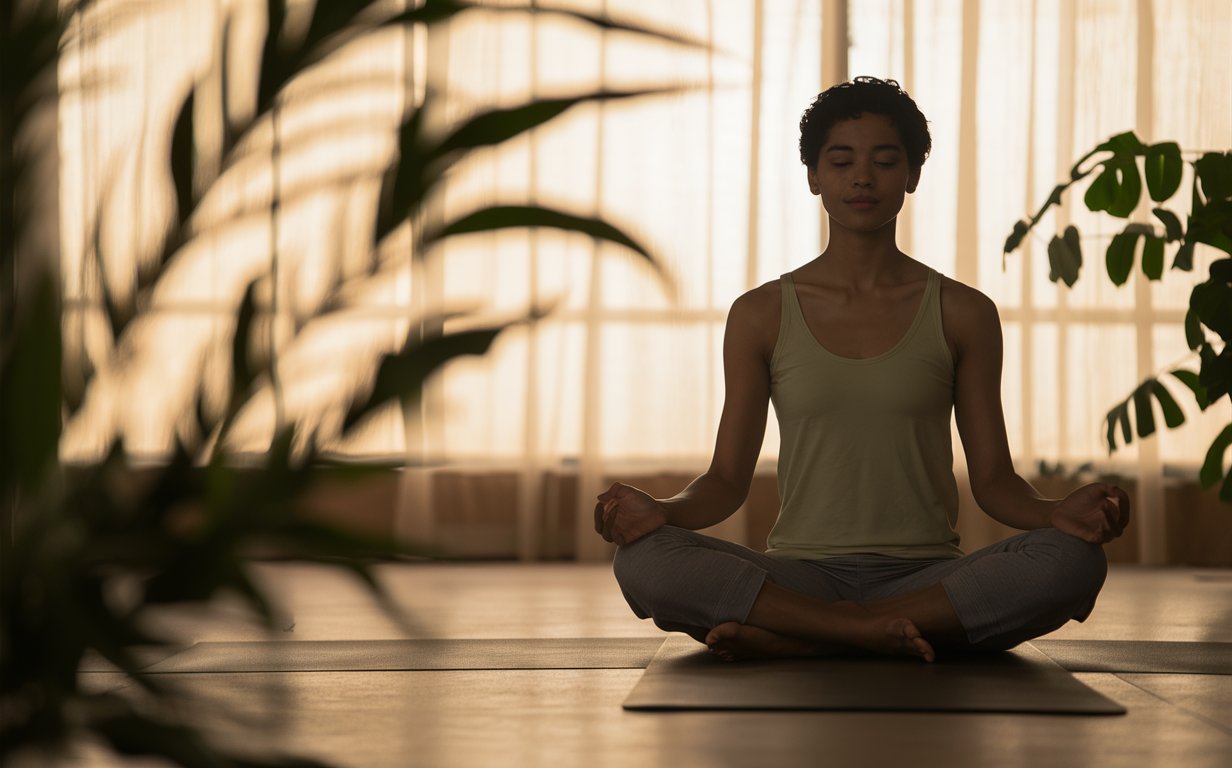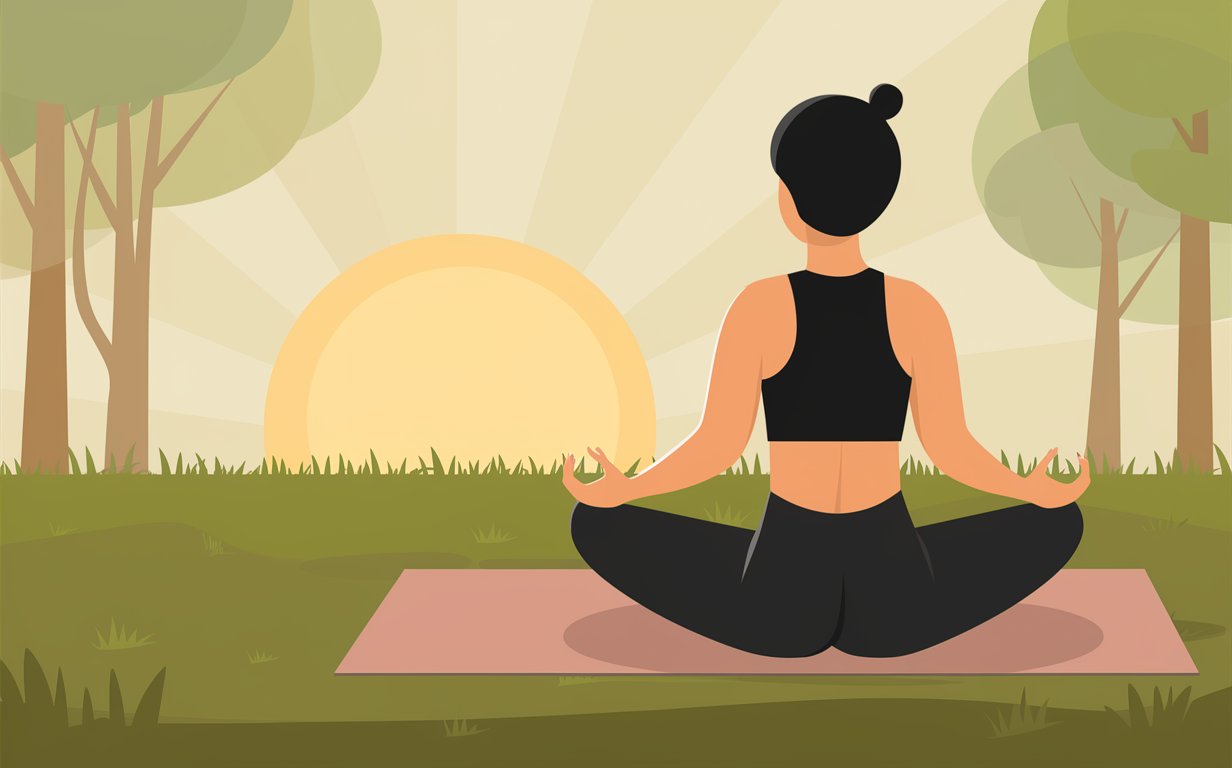Introduction:
In the chaos of daily life, stress often feels like an unwelcome but constant companion. Whether it’s the pressure of meeting deadlines at work, managing family responsibilities, or simply coping with the demands of modern life, stress can creep in and take hold of our minds and bodies. But there’s a beautiful, age-old practice that offers a way to calm the storm: yoga. Yoga isn’t just about twisting into difficult poses; it’s a holistic approach to well-being that can help you find peace and balance in the midst of life’s challenges.
What is Stress, and Why Does It Matter?
Stress isn’t just something that happens in your head; it’s a whole-body experience. When you’re stressed, your heart might race, your muscles tighten, and your thoughts swirl in a never-ending loop. It’s your body’s way of saying, “Something needs attention!” While a little stress can push you to achieve your goals, too much of it over time can lead to serious health issues, like anxiety, insomnia, or even heart disease. Understanding stress and recognizing when it’s taking a toll on you is the first step toward managing it effectively.

Why Yoga Works:
Yoga works wonders for stress because it brings your body and mind together in harmony. Through gentle stretches, mindful breathing, and moments of quiet meditation, yoga invites you to pause, breathe, and connect with yourself. When you’re feeling overwhelmed, these practices can help you slow down and reset. It’s like hitting a mental and physical “refresh” button, allowing you to approach life’s challenges with a clearer, calmer mindset.
Simple Yoga Poses to Help You Relax:
You don’t need to be a yoga expert to start reaping the benefits. Here are a few simple poses that can help melt away stress:
- Child’s Pose (Balasana)
- How to do it: Start by kneeling on the floor. Sit back on your heels, then gently lower your forehead to the ground, stretching your arms out in front of you. Let your body sink into the floor, and just breathe.
- Why it helps: This pose is like giving yourself a hug. It helps you feel grounded and safe, easing tension in your back and shoulders.
- Cat-Cow Stretch (Marjaryasana-Bitilasana)
- How to do it: Get on your hands and knees. As you inhale, arch your back, lifting your head and tailbone (this is Cow Pose).As you breathe out, curve your spine, bringing your chin toward your chest (Cat Pose). Move smoothly between these two motions, letting your breath guide the flow.
- Why it helps: This gentle flow stretches your spine and helps release any tension you’re holding there, especially if you’ve been sitting at a desk all day.
- Legs-Up-the-Wall Pose (Viparita Karani)

- How to do it: Lie on your back with your hips close to a wall. Extend your legs up the wall, letting your arms rest at your sides. Close your eyes and breathe deeply.
- Why it helps: This pose is wonderfully relaxing. It promotes circulation and helps calm your mind, making it easier to let go of the day’s stress.
The Magic of Breath:
Breathing is something we do all the time, but how often do we really pay attention to it? Yoga teaches us that the way we breathe can have a huge impact on how we feel. When stress hits, our breath often becomes shallow and rapid, which only adds to our anxiety. But by practicing mindful breathing, we can calm our nervous system and bring ourselves back to a state of balance.
Here’s a simple breathing exercise you can try:
Deep Belly Breathing:
- How to practice:
- Find a comfortable position, either sitting or lying down. Gently place one hand on your chest and the other on your abdomen. Take a deep breath in through your nose, feeling your belly expand as your lungs fill with air. Slowly exhale through your mouth, noticing your belly lower as you release the breath. Continue this process for several minutes, focusing on the rise and fall of your breath.
- Why it helps: This type of breathing signals to your body that it’s time to relax. It can slow your heart rate and reduce feelings of stress almost immediately.
Meditation: A Quiet Space for Your Mind:
Meditation doesn’t have to be complicated. It’s simply about giving your mind a break from all the noise. Even a few minutes of sitting quietly, focusing on your breath, can make a big difference in how you feel.
How to get started:
- Find a Quiet Spot: Sit comfortably, close your eyes, and take a few deep breaths.
- Set a Timer: as your chouise
- Focus on Your Breath: Notice the sensation of your breath coming in and going out. If your mind wanders (which it probably will), just gently bring your attention back to your breath.

Building Your Own Yoga Routine:
Yoga isn’t a one-size-fits-all practice, and that’s the beauty of it. You can tailor it to fit your needs and your schedule. Whether you have just 10 minutes in the morning or want to unwind with a longer session in the evening, yoga can adapt to your life.
Here’s a simple routine to help you get started:
- Morning Boost: Start your day with a few rounds of Cat-Cow to wake up your spine, followed by Child’s Pose to set a calm tone for the day.
- Midday Break: If you’re feeling stressed at work, take a few minutes to do some deep belly breathing or a quick Legs-Up-the-Wall pose.
- Evening Wind-Down: End your day with a gentle flow, including poses like Forward Fold or Seated Twist, followed by a few minutes of meditation.
Conclusion:
Yoga is more than just a physical exercise; it’s a practice that can transform how you deal with stress. By taking a few moments each day to stretch, breathe, and connect with yourself, you can create a space of calm within the chaos. Remember, it’s not about being perfect—it’s about finding what feels good for you and making it a regular part of your life.
Call to Action:
Have you tried yoga for stress relief? Share your thoughts and experiences in the comments below! And don’t forget to subscribe to our blog for more tips on living a balanced and healthy life. Let yoga be your sanctuary, guiding you to a place of peace and well-being.




